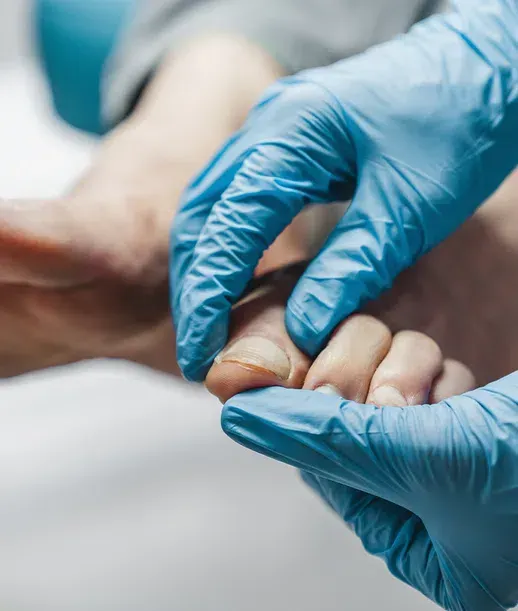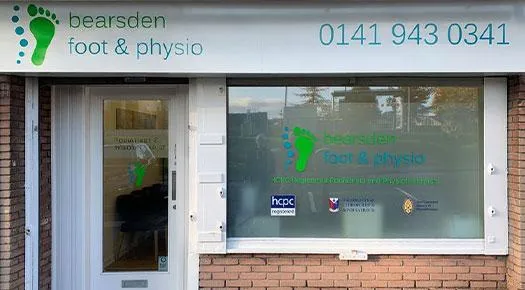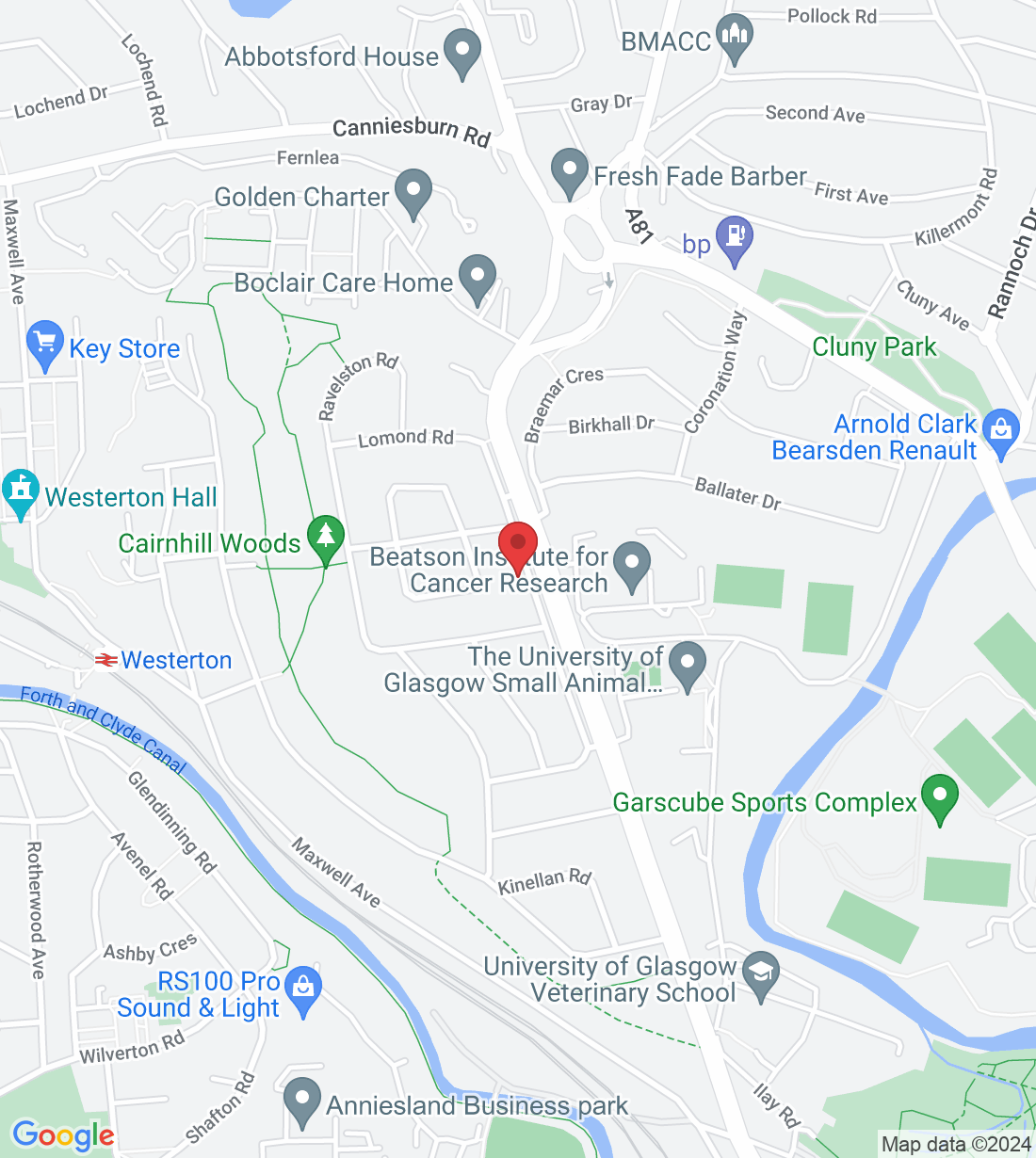Are You Looking For A Solution To Your Fungal Toenails In Bearsden, Glasgow ?
Conveniently Located in Bearsden, Glasgow
52 Switchback Rd, Bearsden, Glasgow, G61 1AE
Mon-Thur: 9am-6pm | Fri-Sat: 9am-5pm
Free Parking Available


Download Your FREE Fungal Toenail Information Pack:
"Discover The Best Ways To Get Rid Of Your Fungal Toenails Forever"
👇 Click the button below to get your FREE Report 👇
Top Rated Podiatry & Chiropody Clinic
Bearsden, Glasgow
Does any of this sound like YOU?
Do you find yourself being self-conscious, particularly in social situations where people may notice the affected nails?
Do you find it difficult to trim or maintain your nails properly, which results in discomfort?
Do you have brittle nails that are prone to breaking, which can be painful and interfere with your daily activities?
Do you have a foul smell from your affected nails that is starting to affect your confidence and social interactions?
Do you find yourself itching, scratching, or picking at the affected area?
Have you started to worry that you will never get rid of your fungal toenail and may never be able to resume the activities you love?
If you answered YES to any of the above, you may have found the ANSWER to your fungal nails questions at Bearsden Foot Clinic, Bearsden, Glasgow

Got a Question?
Ask Bearsden Foot Clinic and their team of experts
Signs and Symptoms That May Suggest You Have a Fungal Nail Problem
As a podiatrist, I would like to provide you with some common signs and symptoms that may suggest you have a fungal nail problem. Please keep in mind that this information is for educational purposes only, and it is essential to consult a healthcare professional for a proper diagnosis and treatment plan. If you suspect you have a fungal nail infection, I recommend scheduling an appointment with a podiatrist for a thorough evaluation.
Here are some conditions that may indicate a fungal nail problem:
Discoloured Nails: One of the early signs of a fungal nail infection is a change in the colour of the affected nail. The nail may turn yellow, brown, green, or white.
Thickened Nails: Fungal nail infections can cause the affected nails to become thick and difficult to trim. They may also appear distorted in shape.
Brittle or Crumbly Nails: Infected nails can become brittle, easily break, or crumble at the edges.
Separation of Nail from the Nail Bed: The infected nail may lift or separate from the nail bed, causing pain and discomfort.
Buildup of Debris: Fungal nail infections can lead to the accumulation of debris under the nail, causing further discolouration.
Foul Odour: In some cases, fungal nail infections can produce a foul smell from the affected nail area.
Pain or Discomfort: As the infection progresses, you may experience pain, tenderness, or a sensation of pressure around the affected nail.
Spreading to Other Nails: Fungal nail infections can spread to adjacent nails, leading to multiple infected nails.
Difficulty in Applying Nail Polish: The presence of a fungal infection can make it challenging for nail polish to adhere to the affected nail surface.
Pre-existing Risk Factors: Individuals with a history of athlete's foot, excessive sweating (hyperhidrosis), diabetes, compromised immune systems, or those who frequently wear closed-toe shoes are at higher risk of developing fungal nail infections.

If you notice any of these signs and symptoms, I strongly advise seeking professional guidance from a podiatrist or healthcare provider. Early diagnosis and appropriate treatment can help prevent the infection from spreading and promote a faster recovery. Remember, self-diagnosis is not recommended, and a podiatrist can accurately assess your condition and recommend the most suitable treatment for your specific case.
Valerie Brewster
Valerie Brewster
Bearsden Foot Clinic
Have Questions? Request a Callback and Speak With Our Expert Team of Podiatrists

Fill in the form to request a Call From Our Team
One of our team members will call you for FREE and answer any questions or concerns you may have about your condition.
What Causes Fungal Toenails?
Fungal toenail infections, also known as onychomycosis, are a common podiatric condition caused by various types of fungi. The infection affects the toenails, leading to discoloration, thickening, and sometimes pain or discomfort. Understanding the causes of fungal toenails is crucial in preventing and managing this bothersome condition. As a podiatrist, I aim to shed light on the contributing factors that can lead to fungal toenail infections, enabling patients to take proactive measures to protect their foot health.
Causes of Fungal Toenails:
Dermatophyte Fungi: The most common cause of fungal toenail infections is dermatophyte fungi. These organisms thrive in warm, moist environments, such as public swimming pools, locker rooms, and showers.
Yeast and Mold: Other types of fungi, such as yeast and mold, can also lead to toenail infections. These fungi are more opportunistic and may affect individuals with weakened immune systems or compromised nail barriers.
Athlete's Foot (Tinea Pedis): Fungal toenail infections can develop from untreated athlete's foot (tinea pedis), a fungal infection that primarily affects the skin between the toes and the soles of the feet.
Trauma or Injury: Nails that have been injured, bruised, or damaged are more susceptible to fungal infections. The trauma creates an entry point for the fungus to invade the nail bed.
Tight-Fitting Shoes: Wearing tight or ill-fitting shoes can lead to excessive sweating and create a warm, damp environment conducive to fungal growth.
Nail Abnormalities: Structural abnormalities in the nails, such as psoriasis or nail dystrophy, can weaken the nail's integrity, making it easier for fungi to penetrate and cause an infection.
Poor Foot Hygiene: Inadequate foot hygiene, including not drying the feet thoroughly after bathing, can create an environment that encourages fungal growth.
Shared Footwear or Nail Tools: Sharing shoes, socks, or nail grooming tools with someone who has a fungal nail infection can lead to cross-contamination.
Poor Circulation: Individuals with poor circulation, often seen in conditions like diabetes, are at higher risk of developing fungal toenail infections due to compromised immune responses.
Ageing: As we age, our nails become more brittle and prone to microscopic cracks, providing an entry point for fungi to invade.
Immune System Weakness: A weakened immune system due to certain medical conditions or medications can make the body less capable of fighting off fungal infections.
Environmental Factors: Living in warm and humid climates can increase the likelihood of fungal growth and infection.

Download Your FREE Fungal Toenail Information Pack:
"Discover The Best Ways To Get Rid Of Your Fungal Toenail Forever"
👇 Click the button below to get your FREE Report 👇
Treatment Options for Fungal Toenails With The Lacuna Method® Treatment
The Lacuna Method in podiatry is a technique used to treat fungal nail infections by creating small holes or channels in the infected nail to facilitate the application of antifungal medications. While specific steps may vary based on the podiatrist's approach and the patient's condition.
Here's a general outline of the treatment process using the Lacuna Method:
Consultation and Assessment:
The process begins with a consultation with a podiatrist. They will examine the affected nail(s) and assess the severity of the fungal infection. The podiatrist will also take into consideration your medical history and any previous treatments you've undergone.
Treatment Planning:
Based on the assessment, the podiatrist will develop a personalised treatment plan. They will determine whether the Lacuna Method is suitable for your condition and discuss the procedure, its benefits, potential risks, and expected outcomes.
Preparation:
Before performing the Lacuna Method, the podiatrist will clean and sterilise the treatment area to reduce the risk of infection. They may also trim the affected nail(s) to make the procedure more effective.
Creating Lacunae:
Using specialised equipment such as a microdrill or a burr, the podiatrist will carefully create small holes or channels in the infected nail plate. These holes allow antifungal medications to penetrate the nail and reach the underlying fungal infection.
Application of Anti-fungal Medication:
Once the lacunae are created, the podiatrist will apply topical antifungal medications directly to the affected area. These medications are more effectively absorbed through the holes, targeting the infection.
Post-Procedure Care:
After the procedure, the podiatrist may provide instructions for post-treatment care. This could include recommendations for keeping the treated area clean, applying any prescribed medications, and avoiding activities that might damage the treated nail.
Follow-Up Visits:
In many cases, the Lacuna Method is not a one-time treatment. Follow-up appointments may be scheduled to monitor the progress of the infection and make adjustments to the treatment plan if necessary. Additional lacunae may be created in subsequent sessions.
Combined Treatment Approaches:
The Lacuna Method can be used in combination with other treatments, such as oral antifungal medications or laser therapy, to enhance the overall effectiveness of the treatment.
It's important to note that the steps and specifics of the Lacuna Method may vary based on the podiatrist's experience, the patient's individual needs, and the severity of the fungal infection. Always consult with a qualified podiatrist or healthcare professional for accurate information and personalised treatment recommendations.
Tired of Living With Fungal Toenails? We Can Help

Fill in the form to request a Call From Our Team
One of our team members will call you for FREE and answer any questions or concerns you may have about your fungal toenail condition.
Is The Lacuna Method® Fungal Toenail Programme at Bearsden Foot Clinic Right for You?
Our team of podiatrists at Bearsden Foot Clinic are experts in treating fungal nails, helping 1000's of patients get back their confidence.
Here are just a few of the things our Podiatry Team can do for you:
We can help quickly relieve your fungal nail symptoms, often within just a couple of sessions.
On day one, we can inform you of what you have, why you have it, and how to get rid of it, so you can feel confident and informed about your treatment.
We can help you discover what's truly causing your fungal nail infection and address the root issue in as little as 20 minutes.
Our treatments can help give you more energy to enjoy each day to the fullest.
We can help you say goodbye to taking harmful painkillers long-term and find a more effective solution.
Our treatments can help you avoid surgery and painful injections.
We want to help you reclaim the quality time with family and friends that fungal toenail infections may have taken away.
We can help you skip the doctor's waiting room and avoid repeated visits to get more prescriptions.
Our goal is to help you stay active and enjoy a fulfilling life, free from the curse of fungal toenail infections.
Still Not Sure If The Lacuna Method® Fungal Toenail Treatment is Right For You? Take Us Up On One Of Our FREE Options
Option #1 (👍 most popular)

Option #2


6 Reasons To Choose Bearsden Foot Clinic
Highly qualified and experienced podiatrists: Bearsden Foot Clinic boasts a team of highly qualified and experienced podiatrists who are dedicated to providing top-notch foot and ankle care. Their expertise ensures that patients receive accurate diagnoses and personalised treatment plans tailored to their specific needs.
Comprehensive range of services: Whether it's treating common foot conditions like bunions, ingrown toenails, or plantar fasciitis, or addressing more complex issues such as sports injuries or diabetic foot care, Bearsden Foot Clinic offers a comprehensive range of services. Patients can trust that all their foot and ankle concerns will be addressed under one roof.
State-of-the-art facilities and technology: Bearsden Foot Clinic is committed to staying at the forefront of podiatry care by investing in state-of-the-art facilities and the latest technology. This allows for more accurate assessments, advanced treatment options, and enhanced patient outcomes.
Patient-centered approach: At Bearsden Foot Clinic, patients are the top priority. The team believes in a patient-centered approach, where they listen attentively to the concerns and goals of each individual. This ensures that the treatment plan aligns with the patient's lifestyle and preferences, leading to better compliance and results.
Holistic and preventive care: Beyond just treating existing conditions, Bearsden Foot Clinic emphasises the importance of holistic and preventive care. They educate patients on proper foot care techniques and lifestyle adjustments to minimise the risk of future foot problems, promoting long-term foot health and overall well-being.
Positive patient reviews and testimonials: The reputation of Bearsden Foot Clinic speaks for itself through the positive feedback and testimonials from satisfied patients. Many individuals have shared their success stories and experiences, highlighting the clinic's commitment to excellence and patient satisfaction.
Frequently Asked Questions About The Lacuna Method Fungal Toenail Treatment
What is the Lacuna Method in podiatry?
The Lacuna Method is a technique used in podiatry to treat fungal nail infections. It involves creating small holes or channels in the infected nail to improve the penetration of topical anti-fungal medications into the affected area.
How does the Lacuna Method work?
The method involves drilling or creating holes in the infected nail using specialised equipment. These holes allow anti-fungal medications to reach the fungal infection directly, potentially improving the treatment's effectiveness.
Is the Lacuna Method effective for treating fungal nail infections?
The effectiveness of the Lacuna Method depends on various factors, including the severity of the infection and the choice of anti-fungal medications. It is often used in combination with other treatments and is best discussed with a podiatrist or healthcare professional.
Is the Lacuna Method painful?
The procedure is typically not painful, as the holes created are small and usually well-tolerated. However, discomfort levels may vary from person to person.
Who is a suitable candidate for the Lacuna Method?
Individuals with fungal nail infections, especially those who have not responded well to traditional treatments, may be considered as candidates for the Lacuna Method. A podiatrist can assess the infection's severity and determine if this method is appropriate.
Are there any risks or side effects associated with the Lacuna Method?
The procedure is generally considered safe, but as with any medical treatment, there can be risks. Potential side effects may include minor pain, bleeding, or infection at the treatment site. Consulting a podiatrist before undergoing the procedure is advisable.
How many sessions of the Lacuna Method are typically needed?
The number of sessions required can vary based on the individual's condition. Multiple sessions may be needed to achieve the desired results, and the podiatrist will determine the appropriate treatment plan.
Can the Lacuna Method be combined with other treatments?
Yes, the Lacuna Method can be used in conjunction with other treatments, such as oral anti-fungal medications or laser therapy, to enhance the overall effectiveness of the fungal nail infection treatment.
Please note that while these answers provide general information, it's important to consult with a healthcare professional for personalised advice and recommendations based on your specific condition and needs.
Have Questions? Request a Call Back and Speak With Our Team of Fungal Toenail Experts

Fill in the form to request a Call From Our Team
One of our team members will call you for FREE and answer any questions or concerns you may have about your condition.



